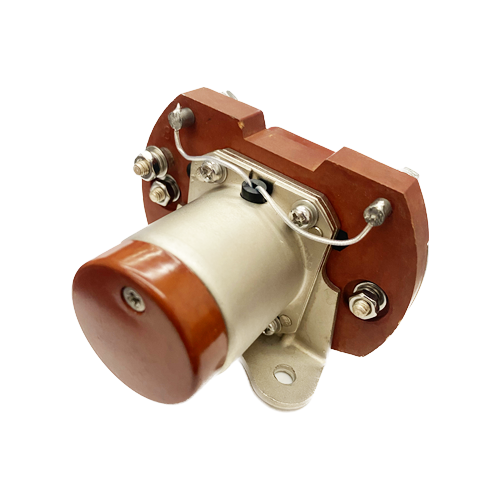Understanding Electromagnetic Contactors: Essential Components in Electronic Devices
2025-07-21

Electromagnetic contactors are pivotal components in the realm of electronic devices, primarily functioning as electrically operated switches. Their primary role is to control the flow of electrical power to various devices, ensuring efficient operation and safety. These contactors are widely used in industrial and commercial settings, where they manage high-voltage and high-current loads.
The basic operation of an electromagnetic contactor involves an electromagnet that, when energized, creates a magnetic field. This field pulls a movable armature toward it, closing the contacts and completing the electrical circuit. When the electromagnet is de-energized, a spring returns the armature to its original position, opening the contacts and interrupting the current flow. This simple yet effective mechanism allows for reliable control of power to motors, lighting, and other electrical systems.
One of the key advantages of electromagnetic contactors is their ability to handle a wide range of voltage and current ratings. They can be designed to operate in various environments, making them suitable for diverse applications, from residential buildings to heavy industrial machinery. Additionally, they are often equipped with auxiliary contacts, which provide feedback on the operational status of the circuit. This feature enhances system monitoring and reliability, making it easier for operators to manage and maintain equipment.
Safety is another crucial aspect of electromagnetic contactors. Many designs include built-in protection mechanisms, such as overload relays and short-circuit protection. These features help prevent damage to the contactor and the connected equipment, reducing the risk of electrical fires and equipment failures. Proper selection and installation of these devices are vital in ensuring an efficient and safe operation.
In terms of maintenance, regular inspections and testing of electromagnetic contactors are recommended to ensure their longevity and reliability. Indicators such as unusual noises, overheating, or failure to operate can signal a need for maintenance or replacement. Understanding the operational lifecycle of these components can aid in planning maintenance schedules and reducing unexpected downtime.
In conclusion, electromagnetic contactors are integral to the functionality and safety of various electronic systems. Their ability to control high-voltage and high-current loads efficiently makes them indispensable in numerous applications. By understanding their operational principles and maintenance needs, professionals in the electronic components industry can enhance the performance and reliability of their systems.
The basic operation of an electromagnetic contactor involves an electromagnet that, when energized, creates a magnetic field. This field pulls a movable armature toward it, closing the contacts and completing the electrical circuit. When the electromagnet is de-energized, a spring returns the armature to its original position, opening the contacts and interrupting the current flow. This simple yet effective mechanism allows for reliable control of power to motors, lighting, and other electrical systems.
One of the key advantages of electromagnetic contactors is their ability to handle a wide range of voltage and current ratings. They can be designed to operate in various environments, making them suitable for diverse applications, from residential buildings to heavy industrial machinery. Additionally, they are often equipped with auxiliary contacts, which provide feedback on the operational status of the circuit. This feature enhances system monitoring and reliability, making it easier for operators to manage and maintain equipment.
Safety is another crucial aspect of electromagnetic contactors. Many designs include built-in protection mechanisms, such as overload relays and short-circuit protection. These features help prevent damage to the contactor and the connected equipment, reducing the risk of electrical fires and equipment failures. Proper selection and installation of these devices are vital in ensuring an efficient and safe operation.
In terms of maintenance, regular inspections and testing of electromagnetic contactors are recommended to ensure their longevity and reliability. Indicators such as unusual noises, overheating, or failure to operate can signal a need for maintenance or replacement. Understanding the operational lifecycle of these components can aid in planning maintenance schedules and reducing unexpected downtime.
In conclusion, electromagnetic contactors are integral to the functionality and safety of various electronic systems. Their ability to control high-voltage and high-current loads efficiently makes them indispensable in numerous applications. By understanding their operational principles and maintenance needs, professionals in the electronic components industry can enhance the performance and reliability of their systems.
Previous:


